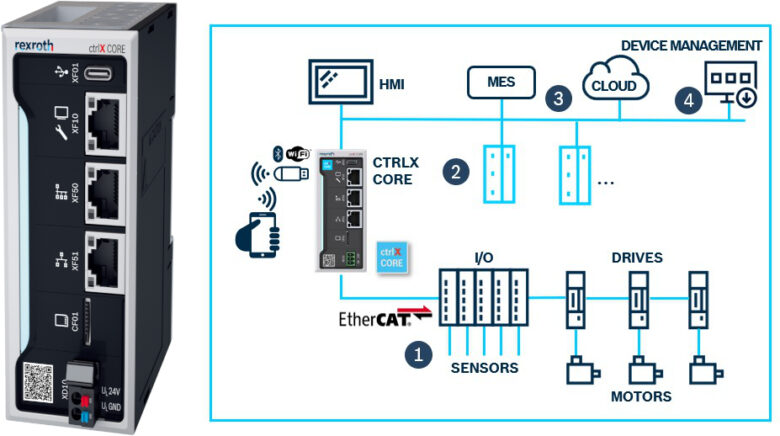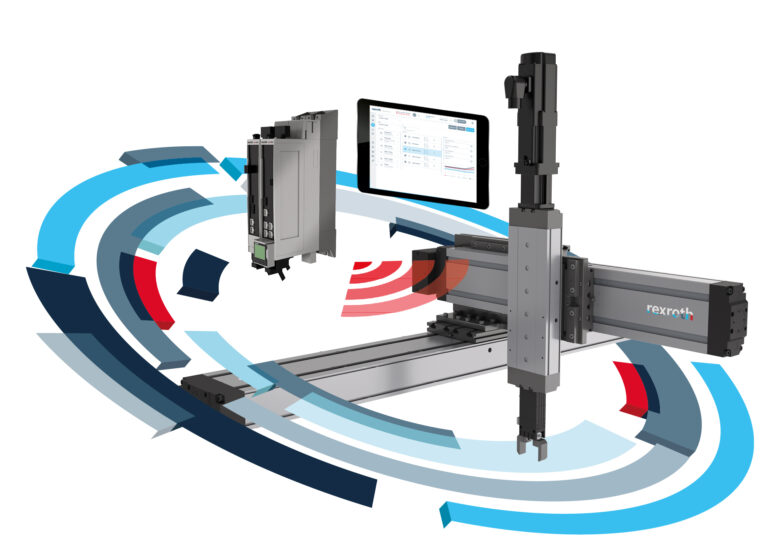The newest generation of factory automation technologies is transforming production lines in every major industry — from consumer-packaged goods and electronics manufacturing to electric vehicles and battery production. As automation technology becomes increasingly sophisticated and connected, manufacturers are exploring new ways to add flexibility, achieve higher productivity, and capture real-time insight across operations. But not all solutions are created equal. Turning possibilities into reality requires a smarter, more streamlined approach to automation.

Until recently, it could take up to two years for new automation systems to go from initial design to full operation. Proprietary protocols and closed architectures have hampered engineering freedom to create or modify production lines and processes rapidly. As a result, companies found it difficult and time-consuming to stay competitive and see returns on automation investments.
Now, new hardware and software solutions are simplifying the engineering and integration of automated installations that are more flexible and scalable than systems of the past.
When designing or deploying new factory automation equipment (whether a single pick-and-place linear handling robot or end-to-end production line upgrade) consider the following best practices.
Make use of open automation platforms
Automation platforms built around closed proprietary hardware, software, and connectivity architectures can seriously complicate implementation. With closed systems, integrating new solutions or programming basic machine functions requires esoteric coding languages and specialized engineering resources that are increasingly hard to come by and costly to procure. These proprietary systems also create interoperability challenges that complicate engineering, integration, and data exchange.
But with the latest advances in controls and automation platforms, production lines today have access to open systems that offer far more flexibility, scalability, and engineering freedom. With these systems, manufacturers and OEMs can use a simplified, app-based approach — much like using a smartphone — to engineer sophisticated automation solutions. They can choose apps from the automation platform provider or third-party suppliers or create apps for functions tailored to their application. Programmers can use coding languages they already know, such as Python, Blockly, C++, or even IEC 61131, to develop new automation functionality.
Factory automation solutions are complex — with cross-technology platforms incorporating multiple controls, drives, electric motors, material transport, linear motion, and other systems. Choosing technology partners with complete automation portfolios and comprehensive solutions can optimize and future-proof machine builds.
An open approach to automation also unlocks a new world of possibilities for process transparency, product tracking, and predictive maintenance. With an open ecosystem, operations can more easily integrate machines and other technology into a complete system that provides connectivity and real-time, machine-level data for advanced production and operational analytics. That means almost any equipment can also operate as an edge device, collecting data on processes and production flows to optimize efficiency.

Leverage hardware with mechatronics capabilities
Mechatronic systems such as linear robots for pick-and-place applications offer significant opportunities for reducing engineering time and improving speed to market. However, automation engineers and OEMs need still faster ways to select, order, and deploy components for manufacturing applications such as joining, dispensing, pressing, and handling.
Here, engineers can benefit from the use of smart mechatronic components. With special online selection tools, OEMs and system integrators can quickly size and select smart mechatronic linear modules, motion control, drives, motors, cabling, and more to create and order complete solutions and have them delivered as a single product with a CAD model as a digital twin.
Consider how some motor drives (so essential to the function of automated equipment) come with commissioning software to give machine controls and other systems the ability to automatically recognize the drive. Some software ecosystems supporting such hardware feature preloaded drag-and-drop motion sequences preconfigured for a range of functions common to handling, pressing, or joining applications. All this eliminates the need for special programming knowledge and saves time during installation. The systems also have connected features that track performance and let operators modify sequences or add new ones as needed.

Include advanced conveyance and transport where possible
Designing conveyor flow and choosing material-handling technology early in the process can help maximize an operation’s flexibility and connectivity. Today’s transport technology is more sophisticated and modular than ever, making it one of the easiest ways to enhance manufacturing agility and lean productivity.
Various material transport technologies provide a broad range of speed and load capabilities for OEMs and end-user engineers to create customized conveyor solutions with specific production requirements. Technologies like modular plastic chain conveyor systems offer new levels of flexibility with components that can easily be configured and reconfigured to meet any manufacturing footprint or change in production flow. What’s more, production lines that contend with high volumes or demanding environments can rely on the high speed and high positioning accuracy of linear motor-driven transfer systems.
These systems can also offer built-in connectivity with visual displays that monitor power consumption, lubrication, and temperature. They can even enable virtual simulations that help determine optimal throughput. By factoring connectivity into a transfer solution from the beginning, companies can ensure their production lines are tooled for the future.
Consider inclusion of AMRs and cobots
Open control platforms make it progressively easier to program robots like autonomous mobile robots (AMRs) or collaborative robots (cobots).
AMRs can handle a range of payloads and come with 360° obstacle detection, allowing them to navigate different spaces or adapt to changing production floors.
Cobots are also well equipped to improve flexibility in task assembly, box forming, case packing, and palletizing operations. New technology like seven-axis cobot systems improve reach and maneuverability, providing more options to position robots to help with ergonomics and optimize floor space without needing extra safety guarding or fencing.
Advances in AMRs and cobots make them practical solutions for a range of use cases, and they can even be used in combination for mobile pick-and-place functionality. With an open technology ecosystem and app-based approach to programming, engineers can easily change robot functions with simple drag-and-drop configuration apps.
Compare suppliers’ support services
Full lifecycle support is an essential requirement for any truly complete automation solution, and it should be a major consideration from the beginning of any automation project.
Manufacturers and OEMs should choose suppliers (preferably global suppliers with robust service infrastructures) offering full lifecycle support as well as components featuring sensors and other machine-life monitoring accessories to gain real-world insights into production-line performance. Together, support and monitoring functions can impart predictive-maintenance capabilities to equipment. Plus, OEMs and end users can leverage such providers’ expertise to get training and (in some cases) apply new IoT approaches to stay ahead of performance issues — to get the most from their technology.
Ultimately, automated production-line innovation and evolution take a team of industry experts who can assess production holistically and objectively, identify and solve roadblocks and complications, and select an optimal set of components and systems for best performance.
This article was contributed by Mark Ziencina, Battery and EV Business Development Manager at Bosch Rexroth.


Leave a Reply
You must be logged in to post a comment.